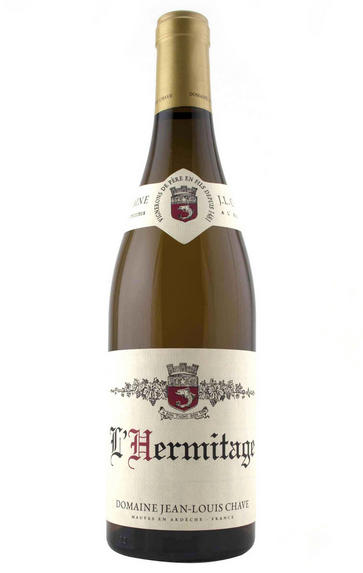
2017 Hermitage Blanc, Domaine Jean-Louis Chave, Rhône
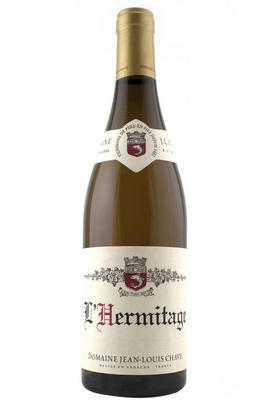
Critics reviews
Translucent yellow. An intensely perfumed bouquet evokes ripe pear, yellow plum, orange zest, smoky minerals and jasmine, along with a deeper suggestion of honey. Honeysuckle, energetic, sharply delineated citrus, orchard fruit flavors stain the palate and become weightier with aeration. The mineral note expands as the wine opens up and drives an impressively long, chewy finish that features lingering floral, brioche and saffron notes.
The key to preserving freshness in the hot 2018 vintage “was to pick early and rack early,” Jean-Louis Chave told me. In 2019, “the sugar levels were so high that fermentations went really slow and you actually had to make more yeast to keep things going or they would just stop.” While both 2018 and 2019 here produced distinctly rich wines I didn’t find them to be overly ripe or heavy. On the contrary, they are showing the structure that makes Chave’s white Hermitage one of the most age-worthy wines of France. The 2017, I expect, will come around sooner than the 2018 and 2019 and the 2016 is simply a knockout and up to the quality level of any other Chave blanc from the last couple of decades.
Drink 2027 - 2036
Josh Raynolds, Vinous.com (May 2020)
From 4.6 ha on a 45-degree, 'damn hot slope with no Atlantic influence'. 80% Marsanne, 20% Roussanne. Yields are low thanks to short pruning. 24-hour debourbage, 80% oak, 20% stainless steel. Goes through malo.
Quite a shock, tasting this straight after 2017 Nahe Rieslings. It's so rich and powerful! (Look at that alcohol...) Clotted cream and peaches. Rich and swirling. Plump but not fat, broad and curved and voluptuous but not without grace. Feels very warm and quite loose knit, verging on flabby, but not quite, thanks mostly to the pronounced pithy bitterness on the finish. Massive drama and statement.
Drink 2021 - 2032
Tamlyn Currin, JancisRobinson.com (August 2023)
Jean-Louis' 2017 white Hermitage is a rich, almost buttered style with considerable fat and an opulent texture, but remains fresh. A tasting of four component parts - Péléat, Rocoules clay, Rocoules limestone and L'Ermite - shows an unusually rich and lush style. The Ermite component does however have a straight, lean, rising floral style to counterbalance the riper, rounder Péléat. Luxurious and cosy rather than focussed and dynamic.
Drink 2020 - 2034
Matt Walls, Decanter.com (November 2018)
Cut from the same cloth, the 2017 Hermitage Blanc is stunning stuff, and Chave lovers should unquestionably have bottles of this in the cellar. Bottled in August of this year, its medium gold hue is followed by a mammoth bouquet of quince, flower oil, buttered almonds, and brioche. Every bit as good on the palate, it’s full-bodied, has a stacked mid-palate, flawless balance, and incredible minerality as well as length on the finish. It’s insanely good today, and while this cuvée can shut down, I wonder if this ever will. My money is on this drinking fabulously well for 25+ years. Life is too short not to drink as much Chave Hermitage Blanc as possible!
Drink 2020 - 2045
Jeb Dunnuck, JebDunnuck.com (December 2019)
About this WINE
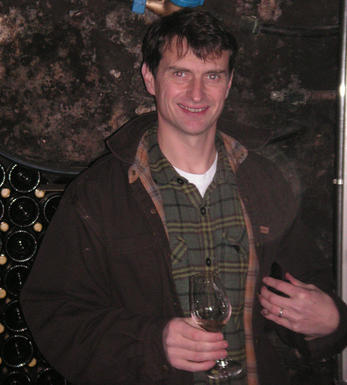
Chave
The Chaves have been growing vines on the famous Hermitage hill for over 500 years. Gérard Chave took over from his father in 1970 and rapidly achieved megastar status due to the extraordinary quality of his wines. The easte is currently under the helm of University of California Davis graduate Jean Louis Chave, although his father Gerard still plays an active role.
The domaine produces a red St Joseph 'Offerus' (made in equal proportions from senior vines in Mauves and St –Jean-de Muzols), an acclaimed Vin de Paille, but their reputation is built on their superb red Hermitage (Syrah with the addtion of 15% white grapes) and white Hermitage (85% Marsanne and 15% Roussanne).
The Chaves own 15 hectares of vines on the Hermitage and crucially their Hermitage holding is spread across 9 of the 18 climates on the hill (incl. Les Bessards, the adjucent Le Méal, Les Roucoles, Maison Blanche and the monopoles L'Hermite and Peléat). This means that they can produce a blend which reflects the separate "terroirs" of the climates and is a perfect balance between aromatic complexity, power and finesse.
The grapes are partially de-stemmed and then fermented in a combination of open wooden vats and cement cuves. The wine is matured in a combination of large wooden foudres and small wooden casks (a proportion of which will be new) for 12-18 months. All Chave wines are bottled unfiltered.
J.L. Chave Sélection is the exclusive négociant label of Jean-Louis Chave, the doyen of Hermitage wine, and offers the perfect solution for those who adore the great wines from this appellation but not the price tag of Chave’s main label.
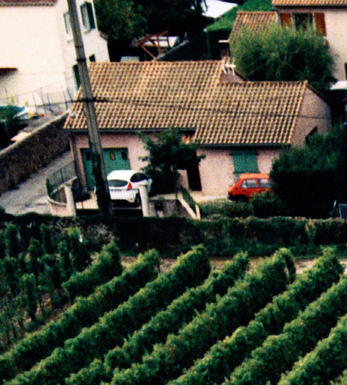
Hermitage
Hermitage is the most famous of all the northern Rhône appellations. The hill of Hermitage is situated above the town of Tain and overlooks the town of Tournon, just across the river. Hermitage has 120 hectares and produces tiny quantities of very long-lived reds.
The vines were grown in Roman times, although local folklore claims their origins to be nearly 600 years earlier. The name ‘Hermitage’ first appeared in the 16th century, derived from a legend of the 13th century Crusade, involving a wounded knight called Gaspard de Stérimberg, who made refuge on the hill, planted vines and became a hermit.
During the 17th century, Hermitage was recognised as one of the finest in Europe. In 1775, Château Lafite was blended with Hermitage and was one of the greatest wines of its day. In the late 19th century, however, Phylloxera wiped out all the vineyards.
The wines are powerful, with a deep colour and firm tannins, developing into some of the finest examples in France, with the potential to age for many decades. The best Hermitage is produced from several climats or more, blended together. The main climats are Les Bessards, Le Meal, L’Hermite, Les Greffieux and Les Diognieres. Most of the finest climats face broadly south, giving maximum sunshine. Most growers only have one or two climats and they might not complement each other; Hermitage quality can therefore vary hugely. Only the top producers have extensive diversified holdings.
80% of the wine produced is red, however up to 15% of white grapes can be used in the blend. Most growers use 100% Syrah and utilise the white grapes to make white wines only. Chapoutier, Jaboulet and Tain l'Hermitage are the principal proprietors of the appellation’s vineyards.
The white wines are made from the Marsanne and Roussanne grapes. Great white Hermitage can age, taking on the fruit characters of apricots and peaches, often giving a very nutty finish. The best examples in great vintages can last 50 years.
Mature red Hermitage can be confused with old Bordeaux. In a blind tasting of 1961 First Growth Clarets, the famous 1961 Hermitage La Chapelle was included. Most people, including its owner, Gerard Jaboulet, mistook it for Château Margaux.
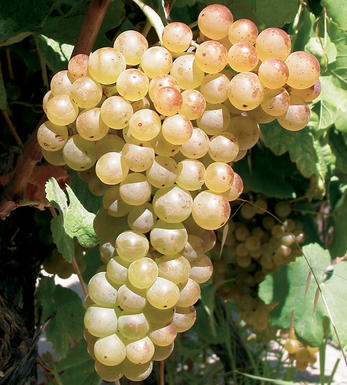
Marsanne
Marsanne is the predominant white grape variety grown in the Northern Rhône where it is used to produce white St. Joseph, Crozes-Hermitage, and Hermitage. It is a tricky grape to cultivate, being susceptible to diseases and being particularly sensitive to extreme climatic changes - if growing conditions are too cool, then it fails to ripen fully and produces thin, insipid wines, while, if too hot, the resultant wines are blowsy, overblown and out of balance.
In the Northern Rhône it tends to be blended with around 15% Rousanne and produces richly aromatic, nutty wines which age marvellously - the best examples are from Hermitage and particularly from Chapoutier. Increasingly it is being grown in the Southern Rhône and Languedoc Roussillon where it is bottled as a single varietal or blended with Roussanne, Viognier, and sometimes Chardonnay. It is also grown very successfully in Victoria in Australia where some of the world`s oldest Marsanne vines are to be found.


Buying options
Add to wishlist
Description
From 4.6 ha on a 45-degree, 'damn hot slope with no Atlantic influence'. 80% Marsanne, 20% Roussanne. Yields are low thanks to short pruning. 24-hour debourbage, 80% oak, 20% stainless steel. Goes through malo.
Quite a shock, tasting this straight after 2017 Nahe Rieslings. It's so rich and powerful! (Look at that alcohol...) Clotted cream and peaches. Rich and swirling. Plump but not fat, broad and curved and voluptuous but not without grace. Feels very warm and quite loose knit, verging on flabby, but not quite, thanks mostly to the pronounced pithy bitterness on the finish. Massive drama and statement.
Drink 2021 - 2032
Tamlyn Currin, JancisRobinson.com (August 2023)
wine at a glance
Delivery and quality guarantee